|
Grey Shrike-thrush Colluricincla harmonica
|
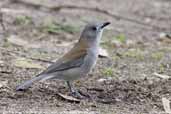 |
Australia
The Grey Shrike-thrush is distributed throughout most of Australia including Tasmania as well as Papua New Guinea. It is found
in eucalypt woodland or forest as well as scrub habitats and near habitations in gardens and parks.
|
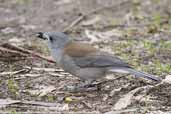 |
It feeds mainly on insects and their larvae for which it forages on tree trunks, branches and on the
ground.
There are 5 sub-species of which 2 are represented here. The nominate sub-species is seen in photos 1 to 4. The male in photos
1 and 2 shows a grey crown separated from the matching rump by a deep olive-brown mantle. The lores are white and the throat is pale grey above a mid
to dark grey breast.
|
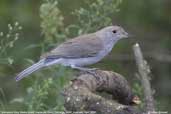 |
Photos 3 and 4 show immatures with a paler, bicoloured bill, a tan eye-brow and fine streaks on the underparts
down to the undertail coverts.
Photos 5 to 9 were taken in Tasmania and show the sub-species C. h. strigata.
|
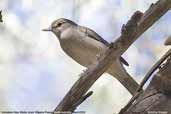 |
In this sub-species the mantle is a less rich olive-brown and the underparts are white. The bill is longer and is
bilaterally compressed as can be seen in photo 8.
Photo 9 shows an immature of this race. It has a wider tan eyebrow and much bolder streaking than the immatures in photos 3 and
4. It is likely that this bird is younger than the other two but it may also be a function of the sub-species.
|
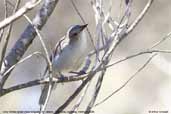 |
Schodde and Mason say: "The status of the Tasmanian isolate, strigata Swainson, is problematic. ...
it differs from harmonica and all other members of the complex in its almost universally white ventrum, facially concolorous lores, a discrete
if faint superciliary, and remarkable dagger-like bill which is lengthened without significant broadening. The bill, longer as well as black in
males, is also markedly sexually dimorphic." They go on to suggest that there may be a case to distinguish strigata
specifically. |
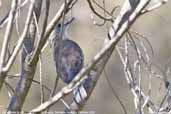 |
|
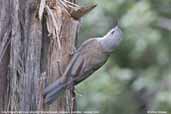 |
|
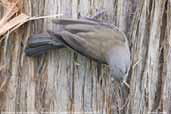 |
|
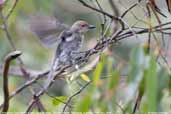 |
|
|
|








